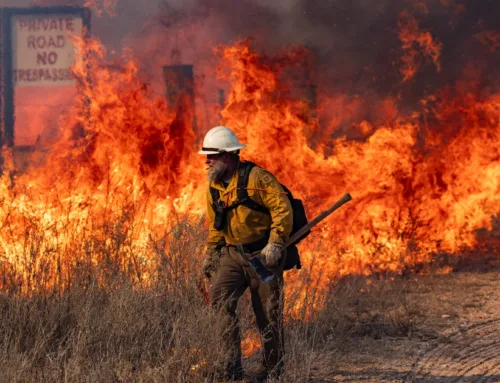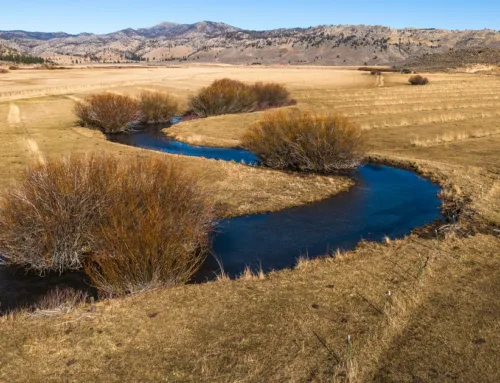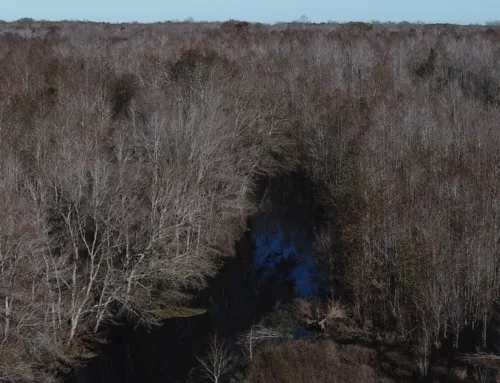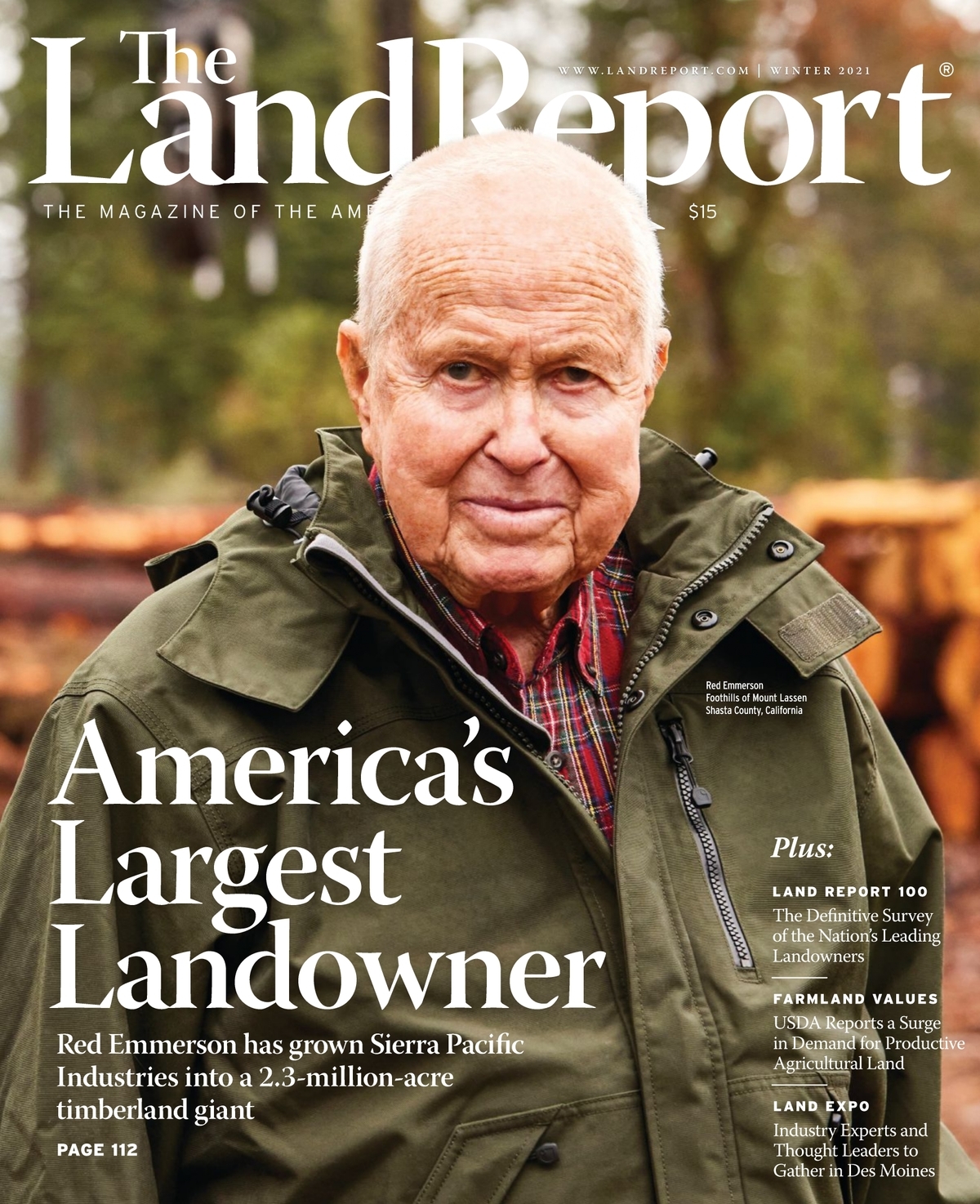Western Wildfires — Fighting Fire with Fire
Western Wildfires — Fighting Fire with Fire

PrescribedBurn_lg
This is the first in a series of posts by Field Reporter Joe Nick Patoski that studies the causes behind the wildfires currently raging out West.
Now that the worst of the wildfire season appears to be behind us, this is a good time to take a longer view about fire and land — specifically the role of intentionally setting fire to grasses or forests as a land management tool.
Prescribed burns are part and parcel of holistic range management, which takes the long-range big picture overview of maintaining healthy rangeland and wildlife habitat. Before settlers arrived in the American West, the native peoples knew well enough to let the grasslands and woodlands burn when fire broke out because the fires germinated seed stock and provided fertilizer in the form of carbon. Even today, in Mexico and other less-developed countries, agrarian societies burning crop remnants ever spring is considered part of the growing cycle.
Fear of fire prompted immigrants who established permanent settlements to suppress wildfires at any cost, which over the course of the past two centuries has contributed to building up considerable fuel loads. That, and a widespread reaction to clear-cutting that included not cutting any timber whatsoever, leaving deadwood standing, augmented over the past two decades by pine beetle infestations that have turned millions of acres of forests into kindling awaiting a spark, helped create the perfect storm for what’s become an annual occurrence of wildfires breaking out throughout the American West.
The “Burn, Baby, Burn” approach utilizes smaller backfires to burn dry leaves, dry brush, and other tinder to reduce the amount of combustible material needed to create a wildfire. Sometimes, backfires can be set to stop a wildfire by denying the wildfire the fuel load it needs to spread.
Various states, counties, and communities have set up prescribed burn agencies, committees, and groups for certification, education, and in many cases, providing insurance in case a controlled burn gets out of control.
When folks think about parcels of land in the thousands of acres and legacy property owners who’ve stewarded over land for multiple generations, they rightfully associate such places with the American West.
But as much as the land has been fragmented and urbanized in the eastern and northeastern United States, the American East is on the cutting edge of forest management, especially in regards to prescribed burns as a management tool, largely because of the surprising number of large chunks of privately-owned land.
Where the Wilderness-Urban Interface is a relatively new concept out west, the juxtaposition of people and the wild world is an old story back east, which gives greater weight to the observations of four non-Westerners — Bob Williams, William Haines, Jr., Chuck Leavell, and Brian Treadwell.
Williams, the vice-president of forestry operations for Land Dimensions Engineering in Glassboro, New Jersey, believes prescribed burning is essential for healthy land. “We need fire back in the forest, but in a controlled fashion, as the Native Americans did for thousands of years.” Moreover, he says, the need for burning isn’t confined to a specific region. “This is not a western problem,” Williams makes clear. “I view this as a national crisis.”
Williams likes to cite the use of prescribed burns by landowners in the eastern United States such as William S. Haines, Jr. of Burlington County, New Jersey. The 59 year old fourth-generation farmer grew up on the family’s 14,000 acres spread, which includes 1,300 acres comprising New Jersey’s largest cranberry bog, Hog Wallow, in Washington Township, the heart of the state’s Pinelands, where the bogs are bordered by pitch pine, oak, and American white cedar.
His management of the woodlands shadowing on the Wading and Oswego rivers earned him recognition this year as New Jersey’s outstanding forest steward by the state Department of Environmental Protection. A key to Haines’ success as a steward is prescribed burning, which is employed to keep forest watersheds healthy with clean water — a critical component for any cranberry bog.
Haines’ methods for ensuring good soil, clean water, and a healthy environment are pretty much the same for landowners in the American West.
Granted, conditions are generally wetter in Haines’ New Jersey than in most western states, which makes prescribed burns less of a threat to neighboring properties. The unfortunate Cerro Grande fire near Los Alamos, New Mexico in 2000, started by a prescribed burn that got out of control, aided by low humidity and high winds, did considerable damage to public perception toward controlled burning.
But fire alone won’t keep forests healthy. Haines’ formula for sound forest management also includes thinning out deadwood and overgrowth.
Four states south of New Jersey, landowner Chuck Leavell of Georgia, who is being profiled in The Land Report, echoed Haines’ sentiment. “We’ve seen in past years and decades, the terrible wildfires that destroy a lot of our forests. If only people could understand the value of prescribed burning. You know the Native Americans used to do it when they were living here without European influence. If we look to the wisdom of the way they were managing forestlands, we’d have less incidence of these wildfires.”
Leavell learned about burning through a forestry and land use correspondence course he’d taken some years ago, then by talking to his consulting forester through the Georgia Forestry Commission and by talking to other landowners.
“Fire helps decrease the woody competition within a stand of pines,” he said. “Let’s all remember that that woody growth in the understory is competing with the pines for water and nutrients. By keeping that growth down, more energy is going to the pines. Secondly, while the fire discourages that woody growth, it is promoting the growth of natural weeds and grasses that benefit the wildlife. It is one of the best tools a forest landowner has, but of course it has to be used wisely and with caution.
Four states west are two Texas ranchers who have become prescribed burn specialists, Brian Treadwell and his father, John. John Treadwell had been a student of holistic rangeland management, and when father and son began using fire to improve some beaten-down range on a ranch they acquired in west central Texas, they saw immediate results. Eighty burns and seven years later, native grasses such as Wilman Lovegrass, sideoats grama, bluestem, green sprangletop, switchgrass, and Indian grass, all of which need fire to germinate, flourished while invasive prickly pear cactus and mesquite trees were beaten back.
“When you open up a thicket with fire, there are plants that have been trapped in there that suddenly have access to air, moisture and light,” John Treadwell said. “It’s the solution to so many of the problems you see around here,” added Brian. “We started a Calf Creek Burn Coop that turned into a Menard County Coop and McCullough County Coop,” Brian said.
Their efforts, which cleared more than 1,000 acres of mesquite and prickly pear cactus and removed Ashe juniper from more than 3,600 acres, bringing back native prairie grasses in the process, earned the Treadwells a Lone Star Land Steward award from Texas Parks & Wildlife for restoring the land.
Since then, the Treadwells have moved on to ranches south of San Angelo, near the Treadwell family homestead, and received official Prescribed Burn training and certification, securing a $1 million insurance policy to do business as a Conservation Fire Team.
It was in that guise that Brian Treadwell got involved with fighting the 12,000 acre Wildcat wildfire that broke out north of San Angelo in March 2011, lighting a 2.5 acre backfire that stopped the big fire’s southward march.
Personnel from the Texas Forest Service were on the scene, but it was Treadwell who made the difference. “The Wardlaw brothers of San Angelo hired me to coordinate a response that included their best interests. The TFS regional chief happens to be the same man I log my prescribed fires with in this region, plus we had the history of four previous wildfires.” So Treadwell did the deed.
It was one of several fires he worked in conjunction with the Texas Forest Service. “The first few, I was invited by an affected or threatened landowner, of which two landowners paid me a day fee for responding,” Treadwell said. “After the Encino Fire, the TFS or fire chiefs invited me to respond.”
Treadwell recalls the Encino Fire: “The north wind pushed the Encino fire across the Wardlaw ranch and threatened to cross the Arden Highway. We had already backed up two miles as the fire approached and there was a large response by area firefighters and the city of San Angelo. I told the TFS chief that if we didn’t stop the fire here, at this road using a backfire, we would be re-gathering another three miles south of our present location and have the same argument on Highway 67. As the fire threatened the fence line and bar ditch, I was given the green light to start burning. I responded with two men I regularly burn with and we proceeded to hustle in over two miles of fire, building the backline to 50-75 yards wide with a zig-zag pattern every two hundred yards, burning multiple strips, robbing the fuel from the approaching headfire. The picture I had sent you was of the backfire I lit meeting the headfire, but the amazing photo would have been the convoy of fire trucks, lights flashing, shadowing my movement in the pasture from the highway.
“That was a Monday. By noon on Friday the Wildcat fire was burning and TFS called me in to help on that one, too. The Wildcat fire threatened half a dozen houses, which preoccupied the responders to the point where the fire escaped and grew beyond control. We spent two days burning around houses and trying to contain the growth of the fire. Our mistake on the Wildcat was waiting for a final confirmation from the overwhelmed TFS chief to begin our backburns.
“The next fire was off of Highway 277, south of San Angelo, on the Allison Ranch. I left my truck running (in the hopes someone would move it if things went badly and I had called in a crewmate to meet me) and jumped out with a torch to begin burning behind the first road-grader widening the intersecting ranch road. We caught that one quickly and kept it under 2000 acres.
“The last four fires we responded to, we were the only true volunteers – we dropped everything to respond without collecting firefighting funds. I would simply rather respond in your neighborhood than wait and fight it in mine. One of the men from my crew has gone on to get his own commercial prescribed burn manager license as well.”
The experience has prompted the prescribed burn specialist to get involved with state and federal agencies to improve communications and shorten response time. “One of our first response problems is that the local fire department or volunteer fire department charges out to a location, but hesitates to react, calling in reinforcements and generally monitoring the advance of the wildfire until a Texas Forest Service commander arrives. TFS would like to arrive on scene to a response in action, but when they arrive, the first responder doesn’t have a head count on available firefighters at location, no maps of the location, and usually no intel on fire behavior or scope, and no applied effort other than where structures are involved. So if the first responders wait three hours for a TFS commander to show, it may take another hour of administrative work for the TFS to understand the situation. In extreme conditions, this could mean the difference from a 300 acre fire to a 3,000 acre fire or bigger.
“What makes a local response so effective is that I can respond in my region faster than the Texas Forest Service can deploy a federal hotshot team to build the same defense. I’m working with the Texas Department of Agriculture burn board to get MCE credit for burn licensees responding to TFS wildfires, in an effort to foster more local response. Just as I’ve told that board, when we can re-direct a retardant-loaded airplane from dropping its load on the head of the dragon to a nearby road which we can use to burn against, than we have begun to work with fire instead of just fighting it.”
Which drives the point home: fire is not just something to be feared by land stewards; it is the tool to fight bigger fires and improve the land and environment to the benefit of not just the landowner, but for all.




